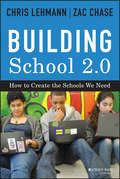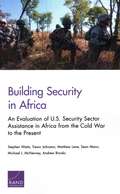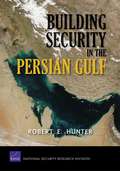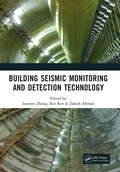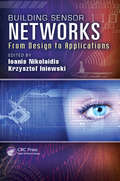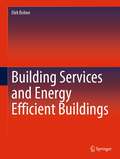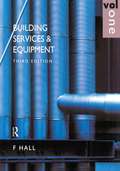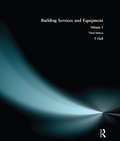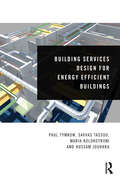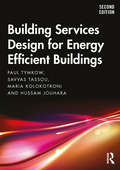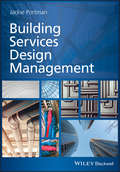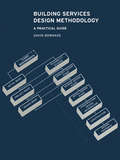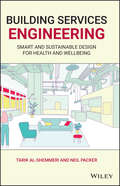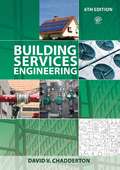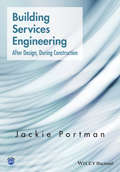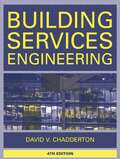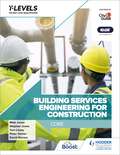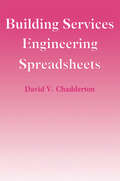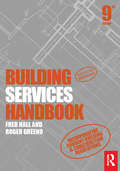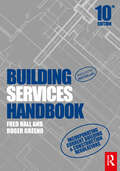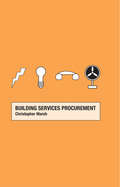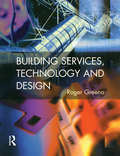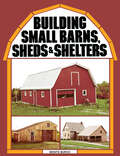- Table View
- List View
Building School 2.0
by Zac Chase Chris LehmannNinety-five propositions for creating more relevant, more caring schools There is a growing desire to reexamine education and learning. Educators use the phrase "school 2.0" to think about what schools will look like in the future. Moving beyond a basic examination of using technology for classroom instruction, Building School 2.0: How to Create the Schools We Need is a larger discussion of how education, learning, and our physical school spaces can--and should--change because of the changing nature of our lives brought on by these technologies. Well known for their work in creating Science Leadership Academy (SLA), a technology-rich, collaborative, learner-centric school in Philadelphia, founding principal Chris Lehmann and former SLA teacher Zac Chase are uniquely qualified to write about changing how we educate. The best strategies, they contend, enable networked learning that allows research, creativity, communication, and collaboration to help prepare students to be functional citizens within a modern society. Their model includes discussions of the following key concepts: Technology must be ubiquitous, necessary, and invisible Classrooms must be learner-centric and use backwards design principles Good technology can be better than new technology Teachers must serve as mentors and bring real-world experiences to students Each section of Building School 2.0 presents a thesis designed to help educators and administrators to examine specific practices in their schools, and to then take their conclusions from theory to practice. Collectively, the theses represent a new vision of school, built off of the best of what has come before us, but with an eye toward a future we cannot fully imagine.
Building Security in Africa: An Evaluation of U.S. Security Sector Assistance in Africa from the Cold War to the Present
by Stephen Watts; Trevor Johnston; Matthew Lane; Sean Mann; Michael J. McNerney; Andrew Brooks;A RAND Corporation study used statistical models to evaluate the impact that U.S.-provided SSA has had on political violence in Africa--in particular, the incidence of civil wars and insurgencies, terrorist attacks, and state repression.
Building Security in the Persian Gulf
by Robert E. HunterThe United States must determine how best to promote long-term security and stability in the Persian Gulf region while seeking to reduce the risks and costs imposed by its role as a permanent regional power. The author analyzes Iraq's future, the role of Iran, asymmetric threats, regional reassurance, regional tensions, and the roles of other external actors. He then sets out criteria and requirements for a new regional security structure.
Building Seismic Monitoring and Detection Technology: Proceedings of the 2nd International Conference on Structural Seismic Resistance, Monitoring and Detection (SSRMD 2023), Xiamen, China, 6-8 January 2023
by Junwen Zhang Xin Ren Zakiah AhmadBuilding Seismic Monitoring and Detection Technology focuses on the research of seismic resistance and monitoring technology. The book gathers cutting-edge research and achievements, and includes contributions on the following subjects: New concepts and key technologies of structural regulation and disaster prevention Test and monitoring study of thermal insulation in tunnels Protection of steel and concrete structures using arc thermal spray Research progress of mechanical metamaterials This book is aiming at scholars and engineers involved or interested in structural engineering and seismic detection technology.
Building Sensor Networks: From Design to Applications (Devices, Circuits, and Systems #17)
by Ioanis Nikolaidis Krzysztof IniewskiFor all the interest that wireless sensor networks have created over the past decade, there are few examples to show that they are truly delivering on this promise and anticipation. What is missing? Deviating from the usual focus on routing and energy efficiency, Building Sensor Networks: From Design to Applications attempts to stitch together the path from conceptual development of applications, on one end, to actual complete applications at the other. With this change in perspective, the book examines important facets of wireless sensor networks (WSNs) that are not often discussed in the literature. From Design Practices to the Networking Protocols that Glue Applications Together Organized into three sections, the book presents insights from international experts representing both industry and academia. The first section, on design practices, explores alternative ways to approach the tasks of developing a suitable WSN solution to an application and assisting that development in a manner that is not necessarily tied to a particular application. The second section, on networking protocols, illustrates the impact of the intermediaries—the "glue" of putting applications together. Chapters look at ways to address traffic, delays in network clustering, and the coexistence of a WSN with other systems on a frequency band. The final section of the book delves into experiences with applications in chemical sensing, defense, global trade and security, and ecosystem monitoring. Although these applications may fail the purist definition of an ideal WSN, they offer valuable lessons for the future development and deployment of WSNs. Challenge Your Thinking about Designing WSN Applications Emphasizing the need to build applications, the contributors present examples of what applications of WSNs could look like and identify the constraints. Throughout, the book challenges and illuminates your thinking about how to tame the complexity of designing a WSN application. It is essential reading for anyone interested in future wireless technologies.
Building Services and Energy Efficient Buildings
by Dirk BohneAuf dem neuesten “Stand der Technik” präsentiert sich das Buch noch übersichtlicher mit einer neu gegliederten, äußerst benutzerfreundlichen Darbietung des Stoffes. Das Fachwissen wurde dabei konzentriert und komprimiert auf die für Architekten und Bauingenieure relevanten Sachverhalte und Zusammenhänge. Komplett neu gestaltet wurde der umfangreiche Abbildungsteil mit hochwertigen Zeichnungen zur bildhaften Kommentierung des Textes. Um im Technischen Ausbau mit der technologischen Entwicklung, den steigenden Komfortansprüchen und den Erfordernissen eines wirtschaftlichen und umweltfreundlichen Umgangs mit der Energie Schritt zu halten, ist der “Wellpott/ Bohne” weiterhin ein unverzichtbares Grundlagenbuch.
Building Services and Equipment: Volume 1
by F. HallServices and equipment in complex modern buildings account for over one-third of the total cost. Therefore study of services and equipment is essential for technicians in construction, surveying and architecture.Building Services and Equipment Volume 1 is the first book in a widely acclaimed trilogy that has become established as the leading work in this field. This volume deals with the topics of fuel conservation and thermal comfort by use of integrated heating, ventilating, air conditioning and lighting systems, district heating, thermal insulation, heat pumps and thermostatic controls.
Building Services and Equipment: Volume 3
by F. HallA widely acclaimed trilogy that has become established as the leading work in this field. As well as taking account of current Building Regulations, Codes of Practice and recent technological advances. Special attention has been paid to the reduction of fuel costs and environmental factors.This volume covers the essential design calculations for pipe-sizing, drainage, electrical installations, thermal problems, ventillation and air conditioning, gas installations, lighting and solar heating.
Building Services and Equipment: Volume 2
by Frederick E HallA widely acclaimed trilogy that has become established as the leading work in this field as well as taking account of current Building Regulations, Codes of Practice and recent technological advances. Special attention has been paid to the reduction of fuel costs and environmental factors.This volume covers pipe-sizing for hot and cold water installations, fine control systems, fire detactor systems, lifts and escalators, service ducts, burglar alarms, gas and electricity supply, daylighting and artificial light
Building Services Design for Energy Efficient Buildings
by Paul Tymkow Savvas Tassou Maria Kolokotroni Hussam JouharaThe role and influence of building services engineers is undergoing rapid change and is pivotal to achieving low-carbon buildings. However, textbooks in the field have largely focused on the detailed technicalities of HVAC systems, often with little wider context. This book addresses that need by embracing a contemporary understanding of energy efficiency imperatives, together with a strategic approach to the key design issues impacting upon carbon performance, in a concise manner. The key conceptual design issues for planning the principal systems that influence energy efficiency are examined in detail. In addition, the following issues are addressed in turn: Background issues for sustainability and the design process Developing a strategic approach to energy-efficient design How to undertake load assessments System comparison and selection Space planning for services Post-occupancy evaluation of completed building services In order to deliver sustainable buildings, a new perspective is needed amongst building and services engineering designers, from the outset of the conceptual design stage and throughout the whole design process. In this book, students and practitioners alike will find the ideal introduction to this new approach.
Building Services Design for Energy Efficient Buildings
by Paul Tymkow Savvas Tassou Maria Kolokotroni Hussam JouharaThe role and influence of building services engineers are undergoing rapid change and are pivotal to achieving low-carbon buildings. However, textbooks in the field have tended to remain fairly traditional with a detailed focus on the technicalities of heating, ventilation and air-conditioning (HVAC) systems, often with little wider context. This book addresses that need by embracing a contemporary understanding of the challenge to address climate change, together with practical approaches to energy efficiency and carbon mitigation for mechanical and electrical systems, in a concise manner. The essential conceptual design issues for planning the principal building services systems that influence energy efficiency are examined in detail. These are HVAC and electrical systems. In addition, the following issues are addressed: background issues on climate change, whole-life performance and design collaboration generic strategies for energy efficient, low-carbon design health & wellbeing and post-occupancy evaluation building ventilation air-conditioning and HVAC system selection thermal energy generation and distribution systems low-energy approaches for thermal control electrical systems, data collection, controls and monitoring building thermal load assessment building electric power load assessment space planning and design integration with other disciplines. In order to deliver buildings that help to mitigate climate change impacts, a new perspective is required for building services engineers, from the initial conceptual design and throughout the design collaboration with other disciplines. This book provides a contemporary introduction and guide to this new approach, for students and practitioners alike.
Building Services Design Management
by Jackie PortmanBuilding services refers to the equipment and systems that contribute to controlling the internal environment to make it safe and comfortable to occupy. They also support the requirements of processes and business functions within buildings, for example manufacturing and assembly operations, medical procedures, warehousing and storage of materials, chemical processing, housing livestock, plant cultivation, etc. For both people and processes the ability of the building services engineering systems to continually perform properly, reliably, effectively and efficiently is of vital importance to the operational requirements of a building. Typically the building services installation is worth 30-60% of the total value of a contract, however existing publications on design management bundles building services engineering up with other disciplines and does not recognise its unique features and idiosyncrasies. Building Services Design Management provides authoritative guidance for building services engineers responsible for the design of services, overseeing the installation, and witnessing the testing and commissioning of these systems. The design stage requires technical skills to ensure that the systems are safe, compliant with legislative requirements and good practices, are cost-effective and are coordinated with the needs of the other design and construction team professionals. Covering everything from occupant subjectivity and end-user behaviour to design life maintainability, sequencing and design responsibility the book will meet the needs of building services engineering undergraduates and postgraduates as well as being an ideal handbook for building services engineers moving into design management.
Building Services Design Methodology: A Practical Guide
by David Bownass D. BownassBuilding Services Design Methodology clearly sets out and defines the building services design process from concept to post-construction phase. By providing a step-by-step methodology for students and practitioners of service engineering, the book will encourage improved efficiency (both in environmental terms and in terms of profit enhancement) through better project management. Generic advice and guidance is set in the current legal and contractual context, ensuring that this will be required reading for professionals. The book's practical style is reinforced by a number of case studies.
Building Services Engineering: Smart and Sustainable Design for Health and Wellbeing
by Tarik Al-Shemmeri Neil PackerBuilding Services Engineering: Smart and Sustainable Design for Health and Wellbeing covers the design practices of existing engineering building services and how these traditional methods integrate with newer, smarter developments. These new developments include areas such as smart ventilation, smart glazing systems, smart batteries, smart lighting, smart soundproofing, smart sensors and meters. Combined, these all amount to a healthier lifestyle for the people living within these indoor climates. With over one hundred fully worked examples and tutorial questions, Building Services Engineering: Smart and Sustainable Design for Health and Wellbeing encourages the reader to consider sustainable alternatives within their buildings in order to create a healthier environment for users.
Building Services Engineering
by David V. ChaddertonEngineering services within buildings account for ongoing energy use, greenhouse gas contribution and life safety provisions. This fully updated sixth edition of David Chadderton's leading textbook is the perfect preparation for those intending to enter this increasingly important field. Chapters addressing heating, climate change, air conditioning, transportation systems, water, gas, electricity, drainage and room acoustics cover all the key responsibilities of the building services engineer. As well as introductory material and the underpinning theory, practical guidance is provided in the form of sample calculations and spreadsheets. New material includes: trends and recent applications in lowering the energy use by mechanical and electrical services systems, heating, cooling and lighting of buildings case studies modelled from post-occupancy reports to provide realistic discussion topics examples of the use of photovoltaic solar panels, chilled beams, under floor air distribution, labyrinths, ground-sourced heat pumps, district heating and cooling, energy performance certificates, energy auditing and wind turbines outlines of the concepts of global warming, carbon trading and zero carbon buildings. exercises in each chapter and online self-study questions. A significantly expanded companion site offers over 1,000 self-test questions, powerpoint slides for lecturers, and an instructors' manual, enabling the rapid generation of lectures, assignments, and tests. This is the ideal textbook for students of building services engineering, as well as a comprehensive guide for those about to start work.
Building Services Engineering: After Design, During Construction
by Jackie PortmanBuilding Services Engineering focuses on how the design-construction interface and how the design intent is handled through the construction stage to handover and in the short term thereafter.Part One sets the scene by describing the stakeholders involved in the construction stage and the project management context.Part Two focuses specifically on the potential roles and responsibilities of building services engineers during construction and post-construction.
Building Services Engineering (2004)
by David ChaddertonBuilding Services Engineering fourth edition is an update and expansion to include web site learning resources. Several of the worked examples in Chapters 1-9, 12, 13 and 16 have been recalculated with new numbers. Carbon, greenhouse gas, emissions are explained and calculated for energy sources and energy saving retrofit projects in Chapter 2. Those who use this book to teach from have new numerical examples. Those who learn from this book have a refreshed set of worked examples. Both users can access additional similar worked examples and learning materials on the web site. Useful web site links further expand the practical scope available. Building Services Engineering fourth edition is intended to be a broad introduction to the range of subjects involved. The engineering content and calculation methods are sufficiently rigorous to match most of what is done within the industry during the design of many building services applications. The subjects covered and the depth to which they are analysed and calculated are more than sufficient to meet the syllabus requirements of higher technician, undergraduate and some postgraduate courses in building services engineering, heating, ventilating and air conditioning, energy management, architecture, building and quantity surveying, housing management, estate management and property facility management. Those preparing for clerk of works examinations will also find the book useful. The advanced user will need to progress to specialized text books and the standard references.
Building Services Engineering for Construction T Level: Core
by Peter Tanner Stephen Jones Mike Jones Tom Leahy David WarrenTackle the core component of your T Level with this comprehensive resource published in association with City & Guilds.With topic coverage ranging from the principles of construction science and design to workplace relationship management, this book provides complete coverage of the Building Services Engineering for Construction qualification's core units and will equip you with the skills you need to shape your career.- Break down complex topics with summary tables and hundreds of images and artworks- Apply your knowledge in real-world case studies and discover some of the dilemmas you can expect to face in the workplace- Re-cap knowledge and understanding with 'Key terms' and 'Test yourself' features, as well as a detailed glossary- Prepare for your exams and the employer-set project using practice questions and project practice exercises- Develop the functional skills you need to thrive in the industry with English and maths exercises- Understand how to avoid hazards and minimise risk with regular health and safety reminders- Hone core skills with expert authors Mike Jones, Stephen Jones, Tom Leahy, Peter Tanner and David Warren, who draw on their extensive teaching and industry experience
Building Services Engineering Spreadsheets
by David ChaddertonBuilding Services Engineering Spreadsheets is a versatile, user friendly tool for design calculations. Spreadsheet application software is readily understandable since each formula is readable in the location where it is used. Each step in the development of these engineering solutions is fully explained. The book provides study material in building services engineering and will be valuable both to the student and to the practising engineer. It deals with spreadsheet use, thermal transmittance, building heat loss and heat gain, combustion analysis, fan selection, air duct design, water pipe sizing, lumen lighting design, electrical cable sizing, at a suitable level for practical design work. Commercially available software, while very powerful and comprehensive, does not allow the user any facility to look into the coded instructions. The user has to rely upon the supplier for explanation, updates and corrections. The advantage that the spreadsheet applications provided with the book have over purchased dedicated software, is that the user can inspect everything that the program undertakes. Parts of the worksheets can be copied to other cells in order to expand the size of each worksheet. Experienced spreadsheet operators can edit the cells to change the way in which data and calculations are used, and with guidance from the explanatory, build their own applications.
Building Services Handbook
by Fred Hall Roger GreenoThe ninth edition of Hall and Greeno's leading textbook has been reviewed and updated in relation to the latest building and water regulations, new technology, and new legislation. For this edition, new updates includes: the reappraisal of CO2 emissions targets, updates to sections on ventilation, fuel, A/C, refrigeration, water supply, electricity and power supply, sprinkler systems, and much more. Building Services Handbook summarises the application of all common elements of building services practice, technique and procedure, to provide an essential information resource for students as well as practitioners working in building services, building management and the facilities administration and maintenance sectors of the construction industry. Information is presented in the highly illustrated and accessible style of the best-selling companion title Building Construction Handbook. THE comprehensive reference for all construction and building services students, Building Services Handbook is ideal for a wide range of courses including NVQ and BTEC National through Higher National Certificate and Diploma to Foundation and three-year Degree level. The clear illustrations and complementary references to industry Standards combine essential guidance with a resource base for further reading and development of specific topics.
Building Services Handbook
by Fred Hall Roger GreenoThe tenth edition of Hall and Greeno's leading textbook has been reviewed and updated in relation to the latest building, wiring and water regulations, new technology and new legislation. For this edition, new updates include electric vehicle charging, overheating in buildings, waste water treatment, energy performance certification, mechanical ventilation, food waste recycling, electro-magnetic lifts, biogas processing and much more. Building Services Handbook summarises the application of all common elements of building services practice, technique and procedure to provide an essential information resource for students as well as practitioners working in building services, building management and the facilities administration and maintenance sectors of the construction industry. Information is presented in a highly illustrated and accessible style. The comprehensive reference for all construction and building services students, Building Services Handbook is ideal for a wide range of courses including T Level, NVQ and BTEC National through Higher National Certificate and Diploma to Foundation and three-year Degree level. The clear illustrations and complementary references to industry Standards combine essential guidance with a resource base for further reading and development of specific topics.
Building Services Procurement
by Christopher MarshProcurers and contractors increasingly need practical guidance for the strategic procurement of building services. Clients seeking to improve the delivery performance of the construction industry are increasingly using alternative procurement arrangements. These modern arrangements attempt to deliver a more strategic approach to achieving value for money. Yet little thought is ever given to the strategic importance of building services. No other single aspect of a project will affect project success more than the timely delivery of a fully functioning services installation. Beyond the normal considerations of time, cost and quality, building services have a series of unique requirements not normally considered. For the first time these unique requirements are combined in a single text, providing the reader with the definitive guide to building services procurement. The text reviews each of the major critical success factors and clearly explains the supporting processes that must be enacted to ensure success. It reviews the general nature of procurement systems and construction projects, and then explores the increasing importance that building services play both in the construction process and in determining success for the client. Each significant stage within the procurement process is explored by explaining its importance and showing what decisions need to be made to develop a cohesive strategy. It concludes by giving a step-by-step guide to clearly develop and implement a building services procurement strategy.
Building Services, Technology and Design (Chartered Institute of Building)
by Roger GreenoBuilding Services, Technology and Design provides a concise guide to the installation and design of principal services in domestic and commercial buildings. It covers the level 2 module of The CIOB's Education Framework and is officially sanctioned by the CIOB as the recognised text for that module. The book combines theory, design and application in one volume and is supported throughout with illustrations, design examples, tables and charts.Services covered include: cold and hot water; heating; ventilation; air conditioning; gas; electricity; security; fire control; sanitation; drainage and transport systems.Building Services, Technology and Design is a core text for the CIOB level 2 module, as well as BTEC HNC/D building studies and degree courses in building. It is also an essential reference for all members of the facilities management and construction industry.
building small: Sustainable Designs for Tiny Houses & Backyard Buildings (Zondervangroupware Small Group Edition Ser.)
by David Jeanie Stilessustainable designs for tiny houses & backyard buildings
Building Small Barns, Sheds & Shelters
by Monte BurchBuild your own outbuildings and enjoy the space to do more of what you love. From simple toolsheds and animal shelters to smokehouses and low-cost barns, Monte Burch guides you through everything you need to know to make your small building projects a reality. Detailed blueprints, easy-to-follow instructions, and expert advice are suited to even the first-time builder. Discover how easy it is to create your own customized spaces that will allow your passions to grow.
